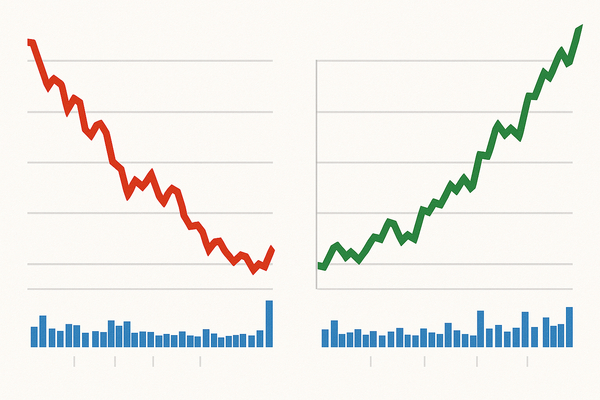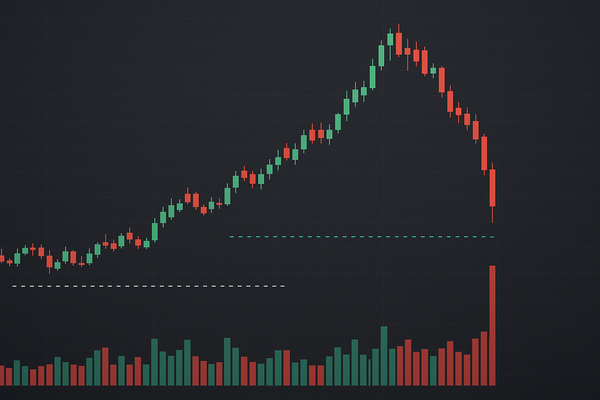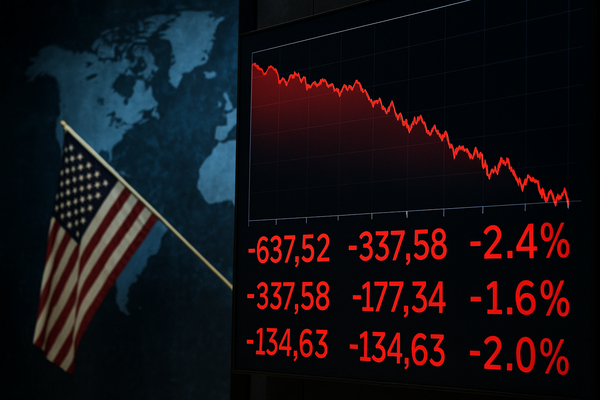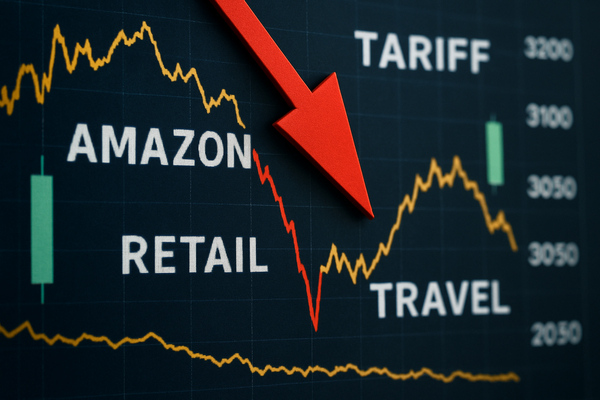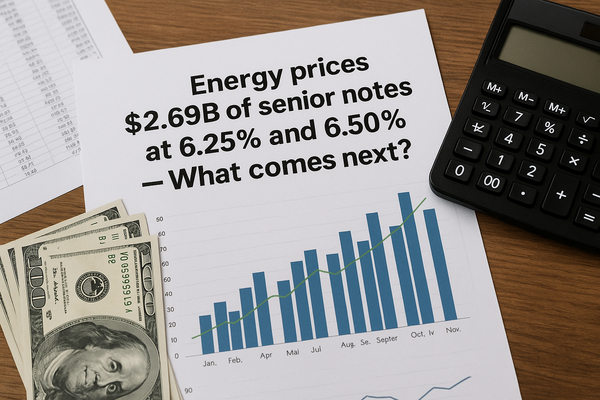
Institutional buyers are reallocating across subsectors as retail momentum alternately amplifies and retreats. Flows are rewarding durable earnings and infrastructure exposure while punishing stocks showing near-term delivery or demand slips. In the short term, that favors names with recent earnings beats and clear backlog; in the long term, investors are focusing on margins, capital returns and contract coverage. Globally, supply-chain and trade policy noise is adding regional dispersion: U.S. transport and aerospace names feel tariff headlines, Europe sees energy order strength, and Asia remains sensitive to semiconductor and rare-earth restrictions.
Market Pulse Check
Trading activity over the past month shows clear bifurcation. Some subsectors — industrial components and data-center materials — have drawn fresh institutional interest. Others, notably parts suppliers and select transport operators, have faced heavier selling. The result is a wide divergence in valuations and performance.
Flows matter. Momentum funds continue to push winners higher. Meanwhile, value-oriented and income-seeking managers rotate into names offering dividends or buybacks. That tug-of-war is amplifying volatility and forcing more active portfolio decisions.
Market Convictions – Upgrades, downgrades, and valuation debates
Analysts and portfolio managers are issuing sharper calls than earlier this year. Upgrades have clustered around companies that reported margin expansion or secured large, visible contracts. For example, a materials firm with a sizeable year-to-date return and margin expansion has been highlighted by research notes as a case of earnings momentum translating into valuation re-ratings.
Conversely, names that missed near-term demand expectations have seen swift downgrades. A metals-coatings specialist reported an earnings shortfall and its share price fell sharply — a reminder that cyclical end-markets still drive revisions. That company’s recent margin recovery (from low-single digits to near 20% in one year) shows how quickly sentiment can swing as fundamentals reset.
Debate centers on how to value elevated profit margins versus slowing top-line growth. Some investors argue that sustainable margin gains justify higher multiples. Others point to forward revenue cadence and potential flattening of demand as reasons to apply more conservative multiples.
Risk Events vs. Expansion – Legal rulings, regulatory challenges, and growth wins
Risk events have a clear market impact. Supplier disputes and governance probes in aerospace supply chains have pressured certain names after headlines about delivery slowdowns and management reviews. One major parts supplier recently requested customer support to absorb inflationary pressures, intensifying investor scrutiny and weighing on its stock.
At the same time, expansion stories are compelling. Energy and power-equipment makers tied to the AI and data-center buildout are seeing robust order books. Another set of companies focused on gas-turbine and large-power equipment reported booming order activity as utilities and industrial customers accelerate capacity additions. That demand has driven double- and even triple-digit moves in some energy-related names over the past year.
Acquisitions and contract awards also separate winners from laggards. A building-materials company’s recent acquisition broadened its product set and was cited by analysts as a near-term earnings catalyst. Meanwhile, a launch-services provider inked repeat missions with an international space agency, reinforcing its revenue visibility and supporting momentum.
Leadership and Fundamentals – Executive changes, core metrics, and trading divergences
Executive moves and board changes are shaping narratives. A recent CEO appointment at an infrastructure services firm, bringing long-tenured sector experience, shifted the stock’s story toward execution and integration risk. Such leadership swaps often prompt fresh model adjustments from sell-side analysts.
Core fundamentals tell a mixed tale. Several companies posted strong quarterly revenue gains and margin expansion driven by price realization and cost control. For example, one ceiling-systems maker reported 16% year-over-year revenue growth and margin gains after a targeted acquisition. In contrast, several freight and logistics names are wrestling with softer freight volumes and margin pressure, producing disappointing short-term results despite longer-term network investments.
Trading behavior sometimes diverges from analyst models. Firms with solid fundamentals have seen bouts of profit-taking, while speculative momentum names trade at high multiples. That divergence is creating active debate over whether to overweight durable earnings growth or to prioritize cash returns and balance-sheet resilience.
Investor Sentiment
Institutional and retail responses are clearly out of sync. Institutions have rotated toward names with contract visibility, robust free cash flow and shareholder-friendly capital allocation. Retail flows continue to inflate momentum stories, especially in high-growth tech-adjacent industrials where retail ownership is higher.
Sentiment metrics reflect this split. Analysts have tightened estimates where demand is opaque and raised targets where backlog and orders are visible. For instance, one defense and aerospace contractor announced a dividend hike and increased buybacks, prompting sell-side upgrades and lifting its peer group’s sentiment. In transport, carriers with expanded international routes have gained positive attention from major brokers, though market reaction to tariff headlines remains a clear risk factor.
Regional divergence persists. U.S.-listed infrastructure and energy names benefit from domestic stimulus and corporate capex, while European peers often trade on energy-order momentum. Asian exposure remains sensitive to export controls and rare-earth policy developments, which can quickly alter supply-cost expectations for manufacturing-focused companies.
Investor Signals Ahead
Near term, investors will watch three signals closely: order-book updates and backlog disclosures, margin sustainability across cycles, and capital-return announcements. Firms that can demonstrate stable or expanding margins while reinvesting selectively and returning cash are drawing institutional conviction.
At the same time, headline risks — supply-chain friction, regulatory probes and trade-policy escalation — could prompt episodic selling that separates transient setbacks from structural problems. That will likely favor active managers who can parse which earnings hiccups are one-offs and which indicate deeper demand erosion.
Overall, the market is sorting winners from risks. Expect continued dispersion between high-momentum, high-valuation names and those valued for cash flow and contracts. For investors focused on sector allocation, the immediate priority appears to be balancing exposure to durable orders and margin resilience while monitoring policy and supply-chain headlines that can rapidly reshape subsector leadership.
Disclosure: this article synthesizes recent company reports and sector notes. Company tickers referenced in the text include Arcosa (NYSE:ACA), Armstrong World Industries (NYSE:AWI), AZZ (NYSE:AZZ), Boeing (NYSE:BA), Spirit AeroSystems (NYSE:SPR), RTX (NYSE:RTX), L3Harris (NYSE:LHX), GE Vernova (NYSE:GEV), Chart Industries (NASDAQ:GTLS), Vertiv (NYSE:VRT), Rocket Lab (NASDAQ:RKLB), Delta Air Lines (NYSE:DAL), United Airlines (NASDAQ:UAL), and United Parcel Service (NYSE:UPS).
